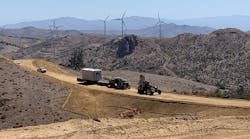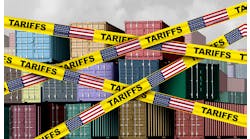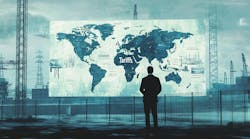Renewables have been growing quickly as they are being fueled by the 194 nations of the Paris climate accord. Those nations have pledged to reduce greenhouse gases, They are pursuing tech advances to lower the cost of renewables compared to fossil fuels, and utilities as well as the business community investing more in clean energy sources.
Additionally, tax incentives in the United States have also attracted new investors. The recent extension of those tax credits and the Biden administration proposing $2 trillion in climate-related spending are likely to propel the U.S. market for the next few years. Globally, investment in the sector is expected to grow sevenfold, reaching $2.15 trillion in 2025.
“The stakes are too high for these complex projects not to succeed,” said Mike Short, C.H. Robinson’s President of Global Forwarding. “The gap between sustainability goals and enough renewable energy to meet those goals can only be filled with a viable supply chain. That supply chain stretches across continents, from mines to manufacturing plants to some of the most remote places on Earth. Wind farms are being built in the ocean. Solar farms with millions of panels are rising in the desert. Just to make a solar panel, roughly 40 different components need to get to the factory, including precious metals. These projects are built on tight timelines and budgets, and companies risk millions in unexpected costs if there are delays anywhere along the way.”
C.H. Robinson has seen its renewables business soar 654% globally in just the past three years. This work will create 14,000 megawatts of energy – enough solar energy to charge 1.73 million electric cars and enough wind energy to power a city the size of London for four months.
The company has also been involved in:
- A renewable-energy developer get 2,000 acres of solar panels delivered on time and on budget for a global beverage company to fulfill a sustainability pledge
- A manufacturer lower its damaged shipments to 1% and raise on-time delivery to 99%
- A manufacturer avoid penalties of up to $10,000 per load per day
Five supply-chain barriers pose the biggest threats to keeping up with the world’s demand for green energy:
- Special equipment needs: Wind turbines keep getting bigger, with some as tall as an 85-story building. The sweep of the blades is more than an acre. Moving oversized parts requires both special expertise and equipment, including flatbed trucks that are in exceptionally short supply. This year has seen load-to-truck ratios over 100:1, meaning 100 loads waiting to be delivered for every flatbed truck available. Solar equipment, on the other hand, has sensitive electronics and glass easily subject to damage, and is also competing for transportation capacity amid one of the tightest markets in history.
- Unpredictability: Five years ago, the movement of goods such as solar panels out of Asia was high volume, low cost. Now, ship capacity is scarce and more expensive because of fewer shipping lines and a global container shortage. Port congestion makes it harder to know when your vessel will arrive, when freight will be unloaded or when enough truck chassis will be available to move it.
- Global supply chain visibility: If 45 containers a day need to arrive at a project site from different origins, knowing each load’s location at any time is critical for contingency planning, timeline management, cost mitigation, and decision-making such as whether 25 or 75 workers are needed at an installation site on any given day. Without centralized visibility and management, blind spots fuel more unpredictability and projects become subject to disparate processes across multiple vendors.
- Tighter budgets: Rising costs – from polysilicon used in solar panels to aluminum to freight charges – are adding pressure to the profitability of projects. Unexpected costs when projects don’t go as planned, like parts arriving late or damaged, can then erase profit margins. Fines are a constant threat.
- Strict timelines: Because developers and investors are hurrying to get projects started in order to meet the deadlines for tax credits, they build in contract penalties that can add up to six or seven figures for parts or equipment delivered late. Also, the nature of these vast, one-time projects makes them vulnerable to lack of resources and infrastructure to meet their needs quickly enough, especially in remote areas.



